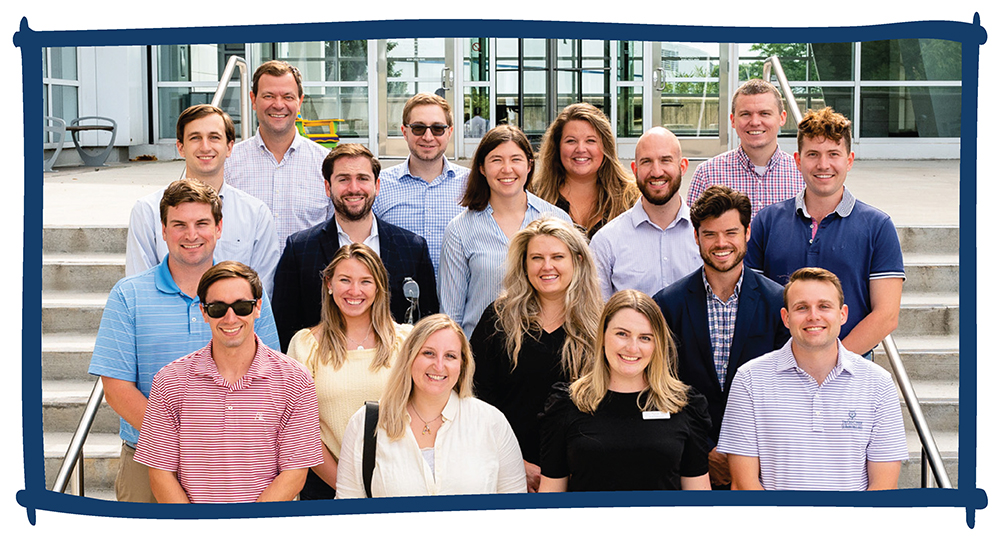Posted on August 30, 2022 by Jane Reynolds
Energy independence is American independence, and research, development, and deployment of American-made clean energy technologies are necessary for getting us there. The U.S. has an abundance of energy resources, and exciting opportunities lie ahead.
Americans are hard at work developing clean energy technologies here at home. Scientists and engineers at the Department of Energy’s (DOE) National Laboratories as well as private energy companies are making strides in nuclear and other clean energy technologies.
Illinois, home to Argonne National Laboratory and Braidwood Nuclear Generating Station, was the perfect first stop for ClearPath’s Clean Energy Innovation Academy (CEIA). CEIA, launched in 2020, is an ongoing educational series for Congressional staff focused on conservative clean energy technology and policy. We were thrilled to bring a delegation of 10 Congressional staff to Illinois for this year’s CEIA educational trip to explore two exciting facilities accelerating research, development, and operation of American clean energy technologies. The delegation included staff who work for Members on the House Science, Space & Technology, House Energy and Commerce, House Ways and Means, Senate Appropriations and Senate Finance Committees as well as the Congressional Western Caucus.
These staff joined us to expand their understanding of innovations in the American clean energy industry that will make the global energy transition cheaper and faster. While in Chicago, we had a packed schedule of educational events, including these highlights:
Our first stop was Braidwood Nuclear Generating Station in Braceville, IL. Braidwood is a two unit 2,389 MW nuclear power plant owned and operated by Constellation Energy. The facility powers about two million homes and employs nearly 700 employees southwest of Chicago.
While there, the Congressional staff visited several parts of the plant to understand how the site’s twin reactors produce electricity. Highlights included the two turbine-generators converting the plants steam into electricity, the main control room at the heart of the plant, and the spent fuel pool which stores fuel after powering the reactor. Braidwood staff answered numerous questions on how the plant operated, inspections and maintenance, what different dials and switches do in the control room, and the different kinds of jobs at a nuclear plant.
Stations like Braidwood are America’s clean energy workhorses, producing zero carbon dioxide emissions as they operate. According to the 2021 report Clear Path to a Clean Energy Future, maintaining existing nuclear reactors is one of the cheapest ways to help meet utility commitments to reduce carbon emissions.
Unfortunately, a lot of development of nuclear technology – a crucial technology for reducing emissions – is done outside of the U.S. In fact, only 2 out of the 52 nuclear reactors currently under construction across the globe are American reactors. But thankfully, there is an exciting wave of next-generation reactors going through the design process today.
The delegation also visited Argonne National Laboratory, America’s first national lab, established in 1946 as part of the Manhattan Project. Argonne is a multidisciplinary science and engineering lab with unique capabilities and world-class facilities.

Front Row L to R: Daniel Dziadon, Amanda Sollazzo, Emily Johnson, Greg Warren
Second Row: Parker Bennett, Kalyn Swihart, Hannah Anderson, Tommy Reynolds
Third Row: Ryan Mowrey, Jake Bornstein, Casey Kelly, Niko McMurray, Grant Cummings
Back Row: Luke Bolar, Alex Fitzsimmons, Ashley Higgins, Mike Davin
Photo Credit: Mark Lopez, Argonne National Laboratory
As part of the visit, the delegation toured the Materials Engineering Research Facility, which develops economically viable processes to enable private-sector commercialization of advanced materials for various purposes, including advanced energy storage. Staff also visited Argonne’s Leadership Computing Facility, home to some of the world’s fastest supercomputers, including the forthcoming exascale computing system, Aurora. Upon completion in 2030, Aurora will apply machine learning and other advanced computing techniques to enable deeper insights into scientific disciplines ranging from physics to materials science to clean energy technologies.
In addition, the delegation toured Argonne’s Center for Nanoscale Materials and Advanced Photon Source, two of the lab’s world-class user facilities that partner with industry to push the boundaries of scientific discovery and technology commercialization.
Additional briefings were provided by Oklo Inc., an advanced nuclear reactor startup, and Antora Energy, a group working to electrify heavy industry with thermal energy storage for zero-carbon heat and power.
ClearPath looks forward to continuing its Clean Energy Innovation Academy in 2023.
